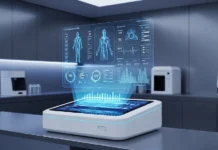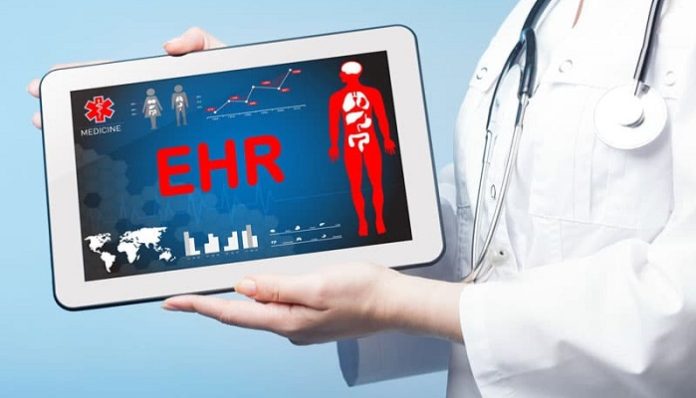EHRs have already gained the reputation of a go-for solution for quality care provision across the US. The types of hospitals employing electronic health records span from acute care hospitals to rehabilitation and specialty clinics. Hospitals for children are not an exception.
According to the American Hospital Association (AHA) annual survey, over 86% of US children’s hospitals adopted some EHR solution in 2019 – 2021. But does general electronic health records software fit the needs of pediatric healthcare providers and hcc risk adjustment coders? According to the Journal of Pediatrics, less than 20% of pediatric hospitals use specific solutions.
Are those specialty EHRs necessary, or could general EHRs cope with pediatric tasks? We’ll explore pediatric EHR solutions in detail to help you make a grounded decision.
General EHR for a children’s hospital
A general EHR is a comprehensive record-keeping solution with all the necessary functionality for valid care provision. The set of modules such solutions typically offer includes:
- Patient management module comprising patients’ health records and medical histories, an appointment scheduling tool, and corresponsive reminders for patients
- Doctor-facing module including customizable e-forms for handy charting and record keeping, dashboards with medical information, e-prescribing, and task trackers and reminders
- Analytics and reporting module for clinicians to help them speed up diagnosing with automated pattern recognition tools or provide preventive care with condition forecasting solutions
General EHRs offer a rich scope of functionalities for providing due care in many specialties. So is pediatrics any different? In fact, pediatric patients’ care and security fall under a wide range of regulations not included in general care. It may affect pediatric patients’ safety, for example, in e-prescribing.
A study on EHR in pediatrics looked into the specifics of e-prescribing for pediatric patients in three clinics. The three participating facilities employed general EHRs. The researchers compared the prescriptions with the requirements for safe and effective e-prescribing for children of the American Academy of Pediatrics (AAP). They discovered that all three clinics had medication errors in their e-prescriptions. The identified errors included incomplete prescriptions, erroneous dosage (under- or overdosing), and a wrong drug selection or administration method. As a result, such errors could negatively affect pediatric patients’ health.
The researchers came to yet another conclusion, a positive one. Over 83% of the identified errors were preventable, provided clinics enhanced the EHRs with AAP-prescribed functions. So what are the specific features needed in pediatric EHRs?
Top five specific pediatric EHR features
We’ve selected five EHR functions necessary in pediatrics to facilitate child care and the experience for clinicians, patients, and their parents or guardians.
Immunization management
Vaccination is not an exclusively pediatric task. However, the number of vaccinations children and teens should take according to the immunization calendar by 21 outnumber those for adults. For example, according to the American Academy of Pediatrics (AAP), healthy children are to take 14 vaccines against various diseases by age two.
Managing individual vaccination plans is a demanding task. Therefore, the Centers for Disease Control and Prevention (CDC) developed a comprehensive and renewable schedule for immunization. Pediatric EHRs integrate the solution. Besides, they have an in-built immunization module that facilitates vaccination management. Planning vaccinations with a handy dashboard and timely notifications on due immunizations is more efficient and less error-prone. Besides, the system sends automated reminder letters to patients and clinicians to ensure immunization occurs in due time.
Growth and development charts
Pediatric health records provide informative growth charts showcasing a range of growth parameters — height, weight, body mass index (BMI), and others. They also offer relevant norms from authoritative resources, such as CDC or World Health Organization (WHO).
In addition, such solutions notify pediatricians of a detected abnormality in case some indexes don’t fit into a growth chart. Doctors can activate the notifications both for typically and atypically developing children.
Moreover, pediatric EHRs provide growth charts for managing patients with situations and conditions affecting their growth parameters, for example, premature birth or Down syndrome.
Weight-based drug dosing support
According to the 2021 report on medication error in pediatrics, dosing errors occur annually in in- and outpatient settings. In the latter case, the dosage error rate reaches over 30% in children weighing below 35 kg. Pediatric EHRs can prevent such situations.
This functionality computes drug doses based on the dosage ranges provided by CDC and the patient’s body weight and surface area. Then the tool offers clinicians the results delivered via those calculations during the prescribing process. As a result, doctors will not have to calculate the necessary dosage manually.
Well-child visits
Well-child visits are the 21 annual visits pediatric patients need to take from birth to age 21. Those appointments cover about half of the visits to pediatricians US children take. During such visits, clinicians check how a child fits into their age’s critical growth and development milestones and if any prevention measures are required.
As the visits play a vital role in children’s health maintenance and disease prevention, pediatric EHRs provide well-child visit tracking functionality. Users can set up specific alerts and reminders notifying patients and their parents or guardians about upcoming visits.
Privacy for adolescents
When adolescents reach the age of consent, which varies from state to state, they gain the right to keep their health data to themselves.
To ensure this right, providers should change privacy settings in their EHRs and disable health information sharing with parents or guardians.
Pediatric EHR systems can quickly activate confidentiality settings. If adolescents know their confidentiality is guaranteed, they will likely visit their assigned clinicians and return for follow-ups. It can be critical for visits concerning reproductive and mental health or substance abuse.
Closing thoughts
A viable pediatric EHR system needs the basic features of a general EHR and certain adjustments dictated by the specifics of patients – children. Unfortunately, the need to employ a specific EHR for pediatric care may disappoint providers: shifting electronic records solutions requires hefty investments, as a rule.
However, if a pediatric healthcare organization has already employed a general EHR in its practice, it doesn’t need a completely different pediatric EHR solution. The available EHR solution can be customized to meet pediatric needs in full. For this matter, the healthcare provider needs to contact professional health IT consultants and developers to help configure its electronic records solution to make it a perfect fit for pediatric care.


















